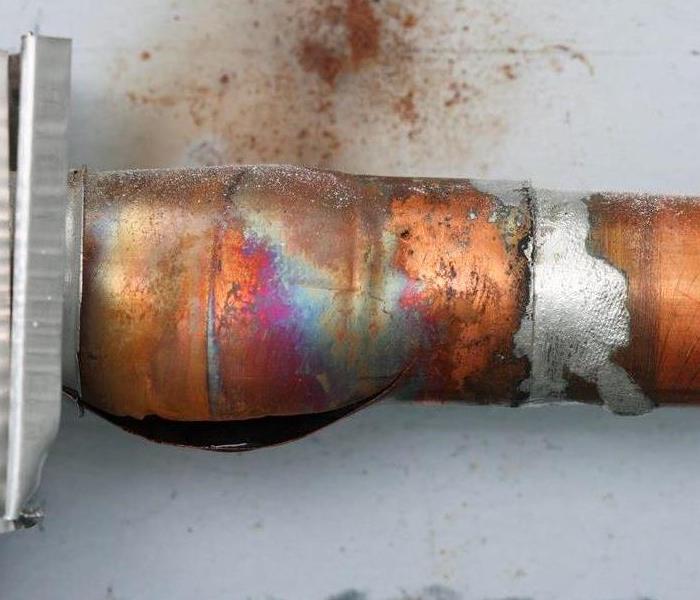How To Prevent Cold-Weather Plumbing Problems
1/2/2020 (Permalink)
Use the following precautionary measures to prevent plumbing problems:
Lower the temperature of the water heater. When the water heater is first installed, plumbers turn its temperature to around 170 degrees Fahrenheit just in case. Yet, many homes don’t need that much steam and pressure.
This winter, turn down the water heater between 120 to 140 degrees Fahrenheit. This prevents a burst or leak and reduces heating costs between 6 to 10 percent. Tip: To be more eco-friendly, contact an expert during the warmer months about installing a tankless water heater or going solar.Insulate pipes. After doing this, you pay less for hot water, and it’s less likely that the pipes will freeze. During the insulation process, look in the basement, crawl spaces, attic, garage, and under kitchen and bathroom counters. These spaces may have unheated water supply lines. Both hot and cold lines in these areas need insulation to maintain higher temperatures.
- Drain water from the swimming pool. If you have a swimming pool, drain the water and the sprinkler supply lines by following the manufacturer’s instructions.
- Open and disconnect the outdoor hose bibs and allow the water to drain completely. Once completed, close the indoor valves and keep the outdoor valve open. This allows the pipe to expand without bursting. Store the hose in the garage or backyard shed for the winter.
- Install pipe sleeves, heat tape, or a heat cable for prevention. To save money, use newspaper to keep the insulator dry.
- Keep the garage door closed as often as possible if supply lines are present in or around the area.
- Remove harmful household chemicals and cleaning products from under the kitchen and bathroom sinks. Open those cabinets to allow warm air to circulate around the plumbing underneath the counters.
- Let the water drip from the faucet served by exposed pipes when the weather is too cold.
- Turn off the water supply to your home to reduce pressure in your home’s plumbing anatomy.
- Call a plumbing professional to move any outdoor pipes. This provides less exposure to the harsh winter elements.





 24/7 Emergency Service
24/7 Emergency Service
